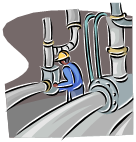The Economist recently published an survey on Offshoring and Outsourcing. If you follow manufacturing trends, this article is great read.
The survey covers trends in both manufacturing and services. It goes in-depth into the manufacturing trend we are now seeing with many companies bringing manufacturing back to the US or to the market where the demand is.
The survey highlights the fact that companies are discovering the “all the disadvantages of distance.” This includes the high transportation costs along with the extra risks. But, it also points out that the wage gap is shrinking between China and the US, natural gas is driving down energy costs, and automation is removing a lot of labor anyway.
The article quotes one consultant who claims that if total labor costs are less than 15% of the product’s cost, then it is not worth it to pursue cheap labor.
Also, there was a nice quote that reminds us of the value and limitations of network design:
Choosing the right location for producing a good or a service is an inexact science, and many companies got it wrong.
They are correct, that network design is not an exact science, but using network design tools can help you better narrow your choices and pick good solutions. With network design, you have a better chance of getting it right. And, if you continually model your supply chain, you can better adjust as conditions change.
